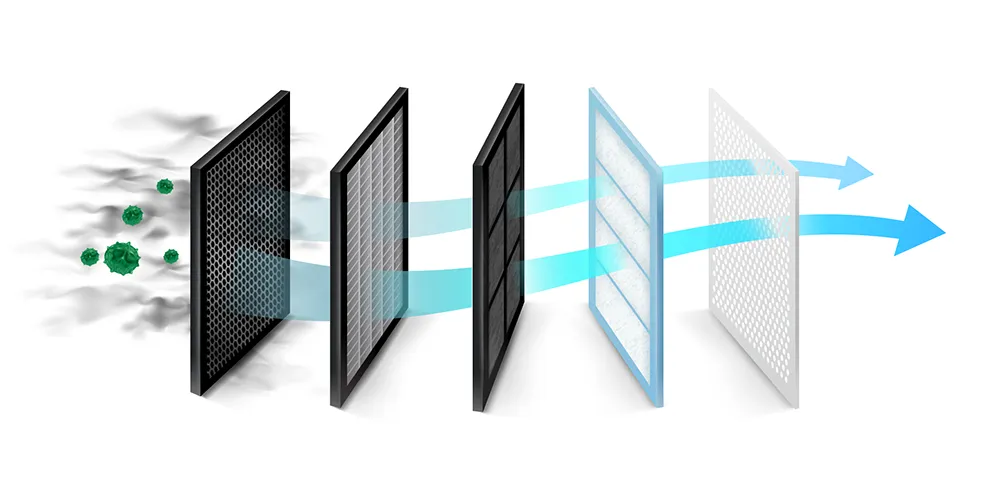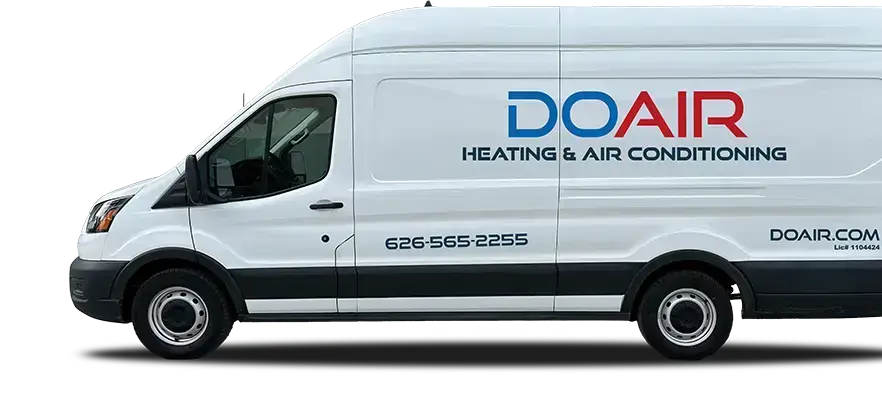Indoor air quality (IAQ) is pivotal for our comfort, health, and well-being. This comprehensive guide delves into the significance of maintaining fresh air flow in homes, explores strategies to improve air circulation, and discusses the role of modern technologies in monitoring and enhancing IAQ.
Understanding Indoor Air Quality
IAQ refers to the air quality within buildings and structures, especially concerning the health and comfort of occupants. Grasping the nature and control of common indoor pollutants is crucial in mitigating indoor health risks and boosting the overall living environment. Clean air, free from pollutants like dust, smoke, and volatile organic compounds (VOCs), coupled with balanced humidity levels, forms the crux of a healthy indoor space.
Fresh Air Flow: A Pillar of Health in Homes
Fresh air is more than a mere comfort; it’s a health necessity. Ensuring adequate ventilation and air circulation is essential to ward off pollutant buildup, regulate moisture, and safeguard the health and well-being of residents. Regular airflow curtails the accumulation of harmful substances and promotes a rejuvenating indoor atmosphere.
Navigating Indoor Air Pollutants
Knowledge of indoor air pollutants paves the way for their control. Radon, mold, VOCs, and particulate matter are among the common culprits, often emanating from everyday sources like cleaning products, building materials, and HVAC systems. Understanding these pollutants’ origins and behaviors is the first step toward a fresher, cleaner home.
Health Implications of Poor Air Quality
Compromised air quality can manifest in various health issues, from minor irritations like eye discomfort and headaches to severe conditions such as respiratory diseases and chronic heart issues. Emphasizing good air quality is not just about comfort but fundamentally about preserving health and preventing disease.
The Science of Home Ventilation
Ventilation is about intentionally introducing fresh outdoor air into a space. It’s a delicate balance, aiming to achieve optimal air quality without compromising energy efficiency. Understanding the principles of effective home ventilation means appreciating the nuances of air exchange, its implications for health, and its integration with sustainable living practices.
Harnessing Natural Ventilation
Natural ventilation harnesses natural forces to circulate air in indoor spaces. It’s about smartly leveraging the environment – using strategic window openings and understanding ventilative cooling, for instance – to enhance indoor air quality naturally, effectively, and economically.
Mechanical Ventilation: A Controlled Approach
While natural ventilation is beneficial, it might not suffice under all conditions. Mechanical ventilation systems offer a more controlled approach, ensuring consistent and adequate air exchange. From exhaust fans to heat recovery ventilators, these systems are about customizing airflow to suit specific needs and environments.
Strategies to Boost Indoor Air Circulation
Enhanced air circulation is key to maintaining a healthy indoor atmosphere. From the strategic placement of fans and regular maintenance of air ducts to incorporating air-purifying plants, there are numerous ways to invigorate a home’s airflow. Each strategy plays a part in crafting a more breathable, more livable space.
Air Purifiers and Filters: Allies in Air Quality
Air purifiers and filters are formidable allies in the quest for cleaner air. They trap pollutants and contribute significantly to indoor air quality. Understanding the types of purifiers, their effectiveness against various pollutants, and maintenance tips is crucial for anyone looking to invest in these technologies.
Monitoring Tools for Indoor Air Quality
Maintaining a healthy indoor environment is made easier with modern monitoring tools. Air quality monitors and smart sensors provide valuable insights into a home’s air quality, enabling residents to track and manage air quality metrics effectively and make informed decisions about their living environment.
Deciphering Air Quality Indicators
Interpreting air quality readings and indicators is vital for informed decision-making. Whether it’s understanding particulate matter readings or gauging VOC levels, a clear grasp of these indicators guides residents in optimizing their indoor environment for health and comfort.
Seasonal Air Quality Management
Indoor air quality fluctuates with the seasons. Addressing seasonal challenges – like heightened pollen levels in spring or dry indoor air in winter – requires specific strategies and awareness. Tailoring approaches to manage air quality throughout the year ensures a consistently healthy and comfortable home.
Controlling Humidity and Dampness
Humidity and dampness significantly influence indoor air quality. Managing these elements is about maintaining comfort, preventing mold growth, and ensuring a healthy living environment. This entails understanding ideal humidity levels and implementing effective moisture control strategies.
Leveraging Smart Home Technologies
Smart home technologies revolutionize how we manage indoor air quality. From smart thermostats to automated air quality systems, these technologies offer precision, convenience, and integration, paving the way for a seamlessly healthy living environment.
Eco-Friendly Practices for Air Quality
Sustainable practices not only benefit the environment but also enhance indoor air quality. Adopting eco-friendly practices like using natural cleaning products and energy-efficient ventilation systems contributes to a healthier, more sustainable living space.
Keeping Fresh Air Flowing: Cleaning and Maintenance
Regular cleaning and maintenance are fundamental to maintaining fresh air flow. This involves not just routine tasks like cleaning air ducts and changing filters but also ensuring that the entire ventilation system functions optimally.
HVAC Systems: The Heartbeat of Indoor Comfort
HVAC systems are central to maintaining indoor air quality. Regular checkups and maintenance are crucial to ensure these systems effectively circulate fresh air, contributing to a comfortable, healthy indoor environment.
Professional Assistance: When to Seek Help
Sometimes, the complexities of indoor air quality necessitate professional intervention. Knowing when and how to seek expert assistance is crucial for effectively addressing and improving indoor air quality.
Choosing Air Quality Experts
Selecting the right professionals is paramount for effective air quality management. This involves considering factors like certifications, experience, customer reviews, and offered services to ensure competent, reliable assistance.
FAQs
The most common indoor air pollutants include particulate matter (like dust and pollen), volatile organic compounds (VOCs), carbon monoxide, radon, and mold. These pollutants originate from various sources within the home, including cleaning products, building materials, and combustion appliances.
Improving natural ventilation can be as simple as opening windows and doors to create cross-ventilation. Additionally, consider the placement of vents and the use of window shades or blinds to direct airflow effectively throughout your home.
Air purifiers can be highly effective, especially in trapping particulate matter and certain pollutants. However, their effectiveness depends on the type of purifier, the size of the area it needs to cover, and the specific pollutants you’re targeting.
It’s generally recommended to check your HVAC filters every month and replace them every 90 days. However, if you have pets, allergies, or are in a high-pollen area, you might need to replace them more frequently.
Yes, certain indoor plants can contribute to improving air quality by absorbing pollutants like VOCs, carbon dioxide, and particulate matter. However, they should be seen as a complement to, not a replacement for, good ventilation and air purification strategies.
When choosing an air quality expert, consider their certification, experience, and the range of services they offer. It’s also beneficial to look at customer reviews and ask for references to ensure they have a proven track record in improving indoor air quality.
Conclusion
Ensuring fresh air flow and excellent indoor air quality is essential for a healthy, comfortable living environment. By understanding pollutant sources, employing effective ventilation strategies, and leveraging modern technologies, enhancing home air quality becomes an achievable, rewarding endeavor. Remember, proactive air quality management paves the way for a healthier, more enjoyable living space.


